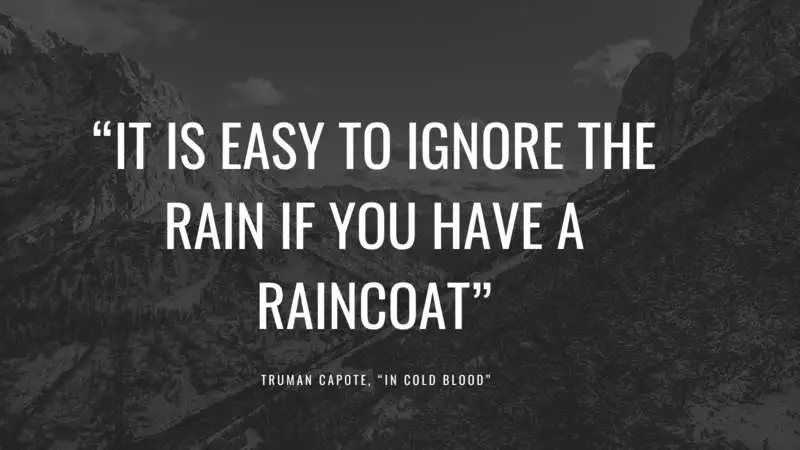Truman Capote “In Cold Blood”: A Gripping Exploration of Crime and Humanity
My Summary on In Cold Blood by Truman Capote
When I first picked up “In Cold Blood” by Truman Capote, I was instantly drawn into the gripping narrative. The book’s meticulous detail and vivid descriptions made me feel as if I was right there in the small town of Holcomb, Kansas. Capote’s ability to humanize both the victims and the perpetrators was haunting and thought-provoking. As I turned each page, I felt a mixture of fascination and dread, captivated by the unfolding investigation and the complex psychological portraits. The seamless blend of journalistic precision and novelistic flair kept me on edge until the very end. Reading “In Cold Blood” was an intense and unforgettable experience that left a lasting impression on my understanding of crime and human nature.
Truman Capote’s “In Cold Blood” is a groundbreaking work that combines elements of true crime and literary fiction. Published in 1966, the novel offers a meticulously researched account of the brutal murder of the Clutter family in Holcomb, Kansas, in 1959. Capote’s immersive storytelling and keen attention to detail bring this haunting and tragic tale to life. In this review, we will delve into the various aspects that make “In Cold Blood” an enduring classic.
In Cold Blood: Unveiling the Power of True Crime
Capote’s decision to write a true crime novel was a bold and innovative choice at the time. “In Cold Blood” blurs the boundaries between journalism and literature, employing novelistic techniques while maintaining a basis in factual reporting. This fusion of genres allows Capote to delve deep into the psychology of the perpetrators, Richard “Dick” Hickock and Perry Smith, as well as the impact of their actions on the small community of Holcomb. By humanizing the killers, Capote challenges readers to confront the complexities of crime and humanity.

Meticulous Research and Narrative Technique
One of the novel’s most remarkable features is Capote’s extensive research and meticulous attention to detail. He conducted hundreds of interviews, visited the crime scene, and spent considerable time with Hickock and Smith. This research serves as the foundation for the rich tapestry of the narrative. Capote’s prose is both eloquent and precise, painting vivid pictures of the characters, their surroundings, and the events that unfold.
Capote’s narrative technique in “In Cold Blood” is masterful. He adopts an omniscient point of view, providing insight into the thoughts and motivations of the characters while maintaining an objective distance. This approach creates an intimate connection between the readers and the events, allowing us to experience the crime and its aftermath in a deeply personal way. The novel’s structure, with its non-linear chronology and seamless transitions between various perspectives, adds to its immersive nature.
Exploration of Themes: “In Cold Blood”
“At the heart of ‘In Cold Blood’ lies a profound exploration of various themes that resonate with readers. One such theme is the nature of evil and the blurred boundaries between good and evil. Capote challenges simplistic notions of morality by depicting Hickock and Smith as complex individuals with their own troubled backgrounds and motivations. The novel raises questions about the potential for darkness within all of us and the factors that push individuals toward criminal acts.
Another theme that pervades the novel is the impact of violence on a community. The Clutter family’s murder shocks the small town of Holcomb, shattering its sense of safety and trust. Capote meticulously captures the fear, grief, and paranoia that ripple through the community, highlighting the lasting scars left by such a heinous crime. Through his portrayal of the townspeople, Capote provides a broader commentary on the vulnerability of society and the fragility of human connections.
Additionally, “In Cold Blood” delves into the psychology of the killers, delving into themes of isolation, loneliness, and the search for purpose. Capote offers a nuanced examination of the human condition, exploring how circumstances and personal histories can shape individuals in profound ways. By delving into the lives of Hickock and Smith, Capote invites readers to reflect on the factors that contribute to criminal behavior and the potential for redemption.
The moral ambiguity that permeates the novel extends to Capote’s portrayal of the criminal justice system. Through his meticulous documentation of the trial, Capote sheds light on the flaws and complexities of the legal process. He raises important questions about the nature of justice, the role of punishment, and the potential for rehabilitation in a society grappling with violence.
Famous Quotes from “In Cold Blood” by Truman Capote
- “The village of Holcomb stands on the high wheat plains of western Kansas, a lonesome area that other Kansans call ‘out there.'”
- This opening sentence sets the scene, emphasizing the isolation and remoteness of Holcomb, which plays a crucial role in the narrative. The description of the location as “lonesome” and “out there” foreshadows the isolation not only of the setting but also of the individuals involved in the tragedy.
- “In this last year, the world has narrowed down to a ball of twine.”
- This quote reflects on the notion of fate and the interconnectedness of actions leading to the inevitable outcome of the Clutter family murders. It suggests a sense of entrapment and the inescapability of the consequences of one’s actions.
- “There’s got to be something wrong with us. To do what we did.”
- Spoken by one of the murderers, this line confronts the moral and psychological questioning that arises from their actions. It’s a moment of self-reflection that touches on themes of guilt, remorse, and the search for reasons behind human capacity for evil.
- “I thought Mr. Clutter was a very nice gentleman…I thought so right up to the moment I cut his throat.”
- This chilling quote provides insight into the paradoxical nature of Perry Smith’s character and his actions. It showcases the complexity of human psychology and the disturbing coexistence of normal human impressions and violent intentions.
- “It is easy to ignore the rain if you have a raincoat.”
- This metaphorical statement comments on the disparities in societal protection and care. It reflects the broader social and economic inequalities that can leave some exposed to life’s hardships while others are shielded.
- “Imagination, of course, can open any door – turn the key and let terror walk right in.”
- Capote explores the power of the human mind to create fear and dread, often greater than the reality of the situation. This quote delves into the psychological impact of fear and imagination on the human psyche, a recurring theme throughout the investigation and trial.

Trivia Facts about “In Cold Blood”
- Nonfiction Novel: Truman Capote claimed to have invented a new genre, the “nonfiction novel,” with the publication of “In Cold Blood.” The book combines factual reporting with the narrative techniques and psychological depth traditionally found in novels, blurring the line between fact and fiction.
- Extensive Research: Capote and his friend Harper Lee, who would go on to win fame as the author of “To Kill a Mockingbird,” traveled to Kansas to research the book. They spent six years interviewing investigators, residents, friends of the Clutter family, and the murderers themselves, accumulating over 8,000 pages of notes.
- Personal Connection with the Killers: Capote developed a complex, emotional relationship with both of the murderers, Richard Hickock and Perry Smith, during the time he spent interviewing them on death row. This relationship, especially with Perry Smith, deeply affected Capote and has been the subject of much discussion and analysis.
- Influence on the True Crime Genre: “In Cold Blood” is considered a pioneering work in the true crime genre. Its success paved the way for future true crime narratives that sought to explore the psychological and societal underpinnings of crime.
- Critical and Commercial Success: Upon its release, “In Cold Blood” was an immediate bestseller and received widespread critical acclaim. It is still regarded as one of Capote’s masterpieces and a classic of American literature.
- Controversy and Criticism: Despite its success, “In Cold Blood” has been the subject of controversy. Critics have questioned the accuracy of some details and Capote’s objectivity, given his close relationship with the murderers. There have also been ethical concerns about the way Capote portrayed the victims and the killers, and the impact of the book on their families.
- Lasting Impact on Capote: The emotional toll of writing “In Cold Blood” and the years Capote spent immersed in the story of the Clutter murders are believed to have significantly contributed to his subsequent struggles with substance abuse and depression. He never completed another novel after “In Cold Blood.”
- Adaptations: The book has been adapted into several films, including a 1967 film directed by Richard Brooks, which received critical acclaim, and more recent films focusing on Capote’s process of writing the book, such as “Capote” (2005) and “Infamous” (2006).
Conclusion “In Cold Blood”
Truman Capote’s “In Cold Blood” remains an iconic work in the realm of true crime literature. Its innovative blend of journalistic reporting and literary craftsmanship has left an indelible mark on the genre. Capote’s meticulous research, narrative technique, and exploration of profound themes make the novel a gripping and thought-provoking read. “In Cold Blood” challenges readers to confront the darker aspects of humanity, urging us to question our own moral compass and the intricate interplay between crime and society. Decades after its publication, the power and enduring relevance of “In Cold Blood” continue to captivate and haunt readers, cementing its place as a literary masterpiece.
Further Book Reviews of Truman Capote
“Breakfast at Tiffany’s” by Truman Capote: A Timeless Tale of Love, Loss, and Glamour “Breakfast at Tiffany’s” by American Author…
A Hidden Gem of Love and Longing – Truman Capote’s “Summer Crossing” Delve into the captivating world of American Author…
Truman Capote, The Grass Harp: A Delicate Symphony of Human Connections Truman Capote’s “The Grass Harp” is a captivating and…


